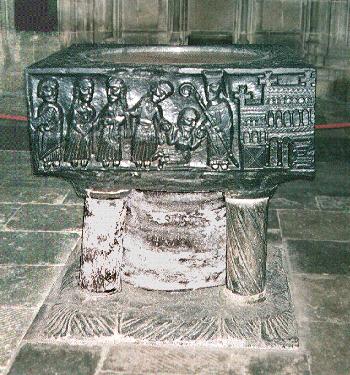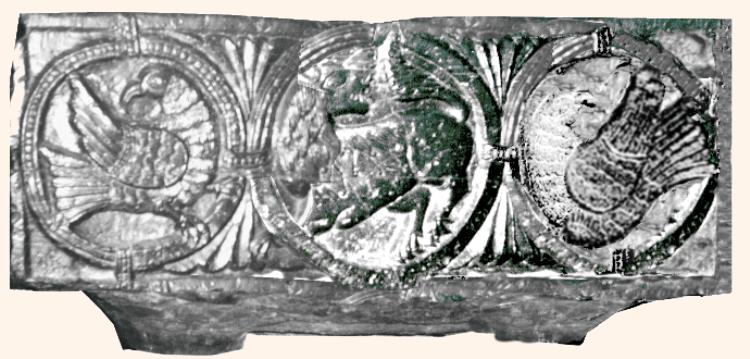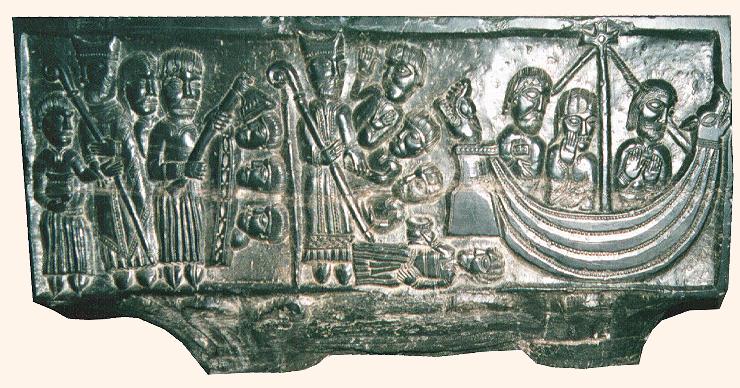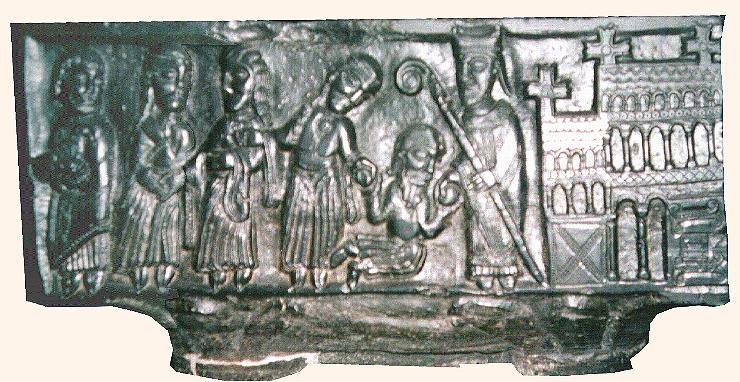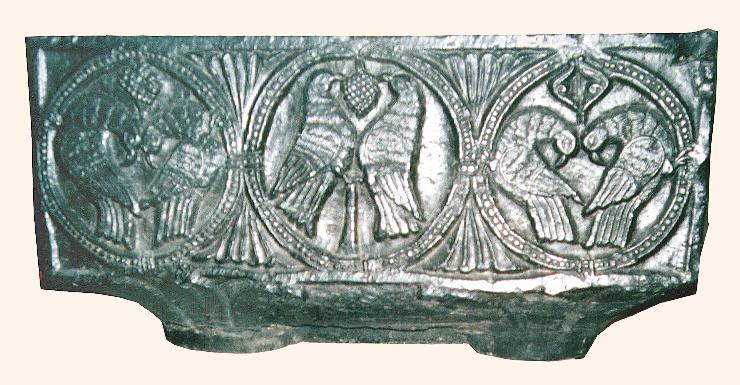The left hand part of the panel shows the legend of how St Nicholas became the patron saint of children, and a rather gruesome tale it is. The panel shows St Nicholas with a child standing beside him. To his left is a pork butcher holding an axe, and behind him is the butchers wife. On the right, and arranged vertically, are three dead boys in a brine barrel.
The legend tells how three lost boys sought shelter for the night from a butcher. He welcomed them into his house, fed them and gave them beds for the night. However when they had gone to sleep, he killed them, cut off their heads, and put their bodies in a brine barrel to use as meat in his sausages (shades of Sweeny Todd the Barber). Just as he was finishing his task, St Nicholas came along also seeking shelter, and he told the butcher he would like to sup off the three little boys in the brine barrel. Completely surprised and stricken with concience the butcher made a full confession whereupon the Saint restored the boys to life and became the guardian of the boys and all children everywhere.
|
The right hand section shows "The Legend of the Golden Cup". In this story a childless nobleman (sitting at the front of the boat), vows to present a gold cup to St Nicholas if a son and heir is born to him. This duly happens and the nobleman has a fine gold cup made. However the cup is so fine that he decides to keep it for himself and has a second cup made for St. Nicholas. He then sets off with his son (the centre figure in the boat), over the seas, to present the cup. The figure at the rear of the boat, holding the tiller, is the captain of the boat. While on the voyage they run into a storm and the nobleman's son, holding the first cup, is swept overboard and drowned. Grief stricken, the nobleman goes on to the church of St. Nicholas and presents him with the second, lesser, cup. However, when it is placed on the altar the cup is cast down. The nobleman keeps placing it on the altar but each time it is cast down. Eventually the nobleman's son appears, bearing the first cup, and relates how St. Nicholas rescued him from the deep and delivered him to dry land. In gratitude the nobleman presents both the cups to St. Nicholas. |
